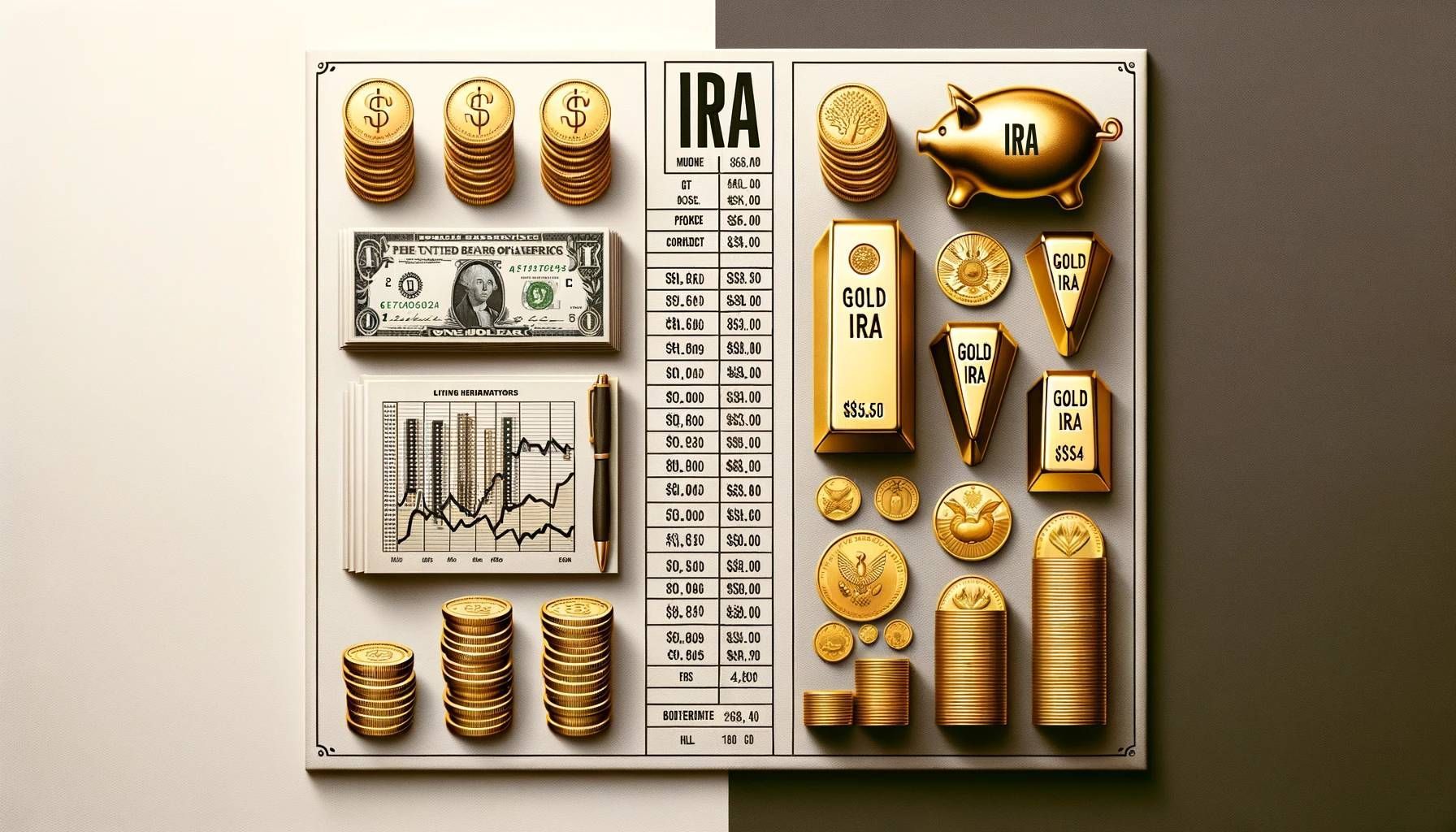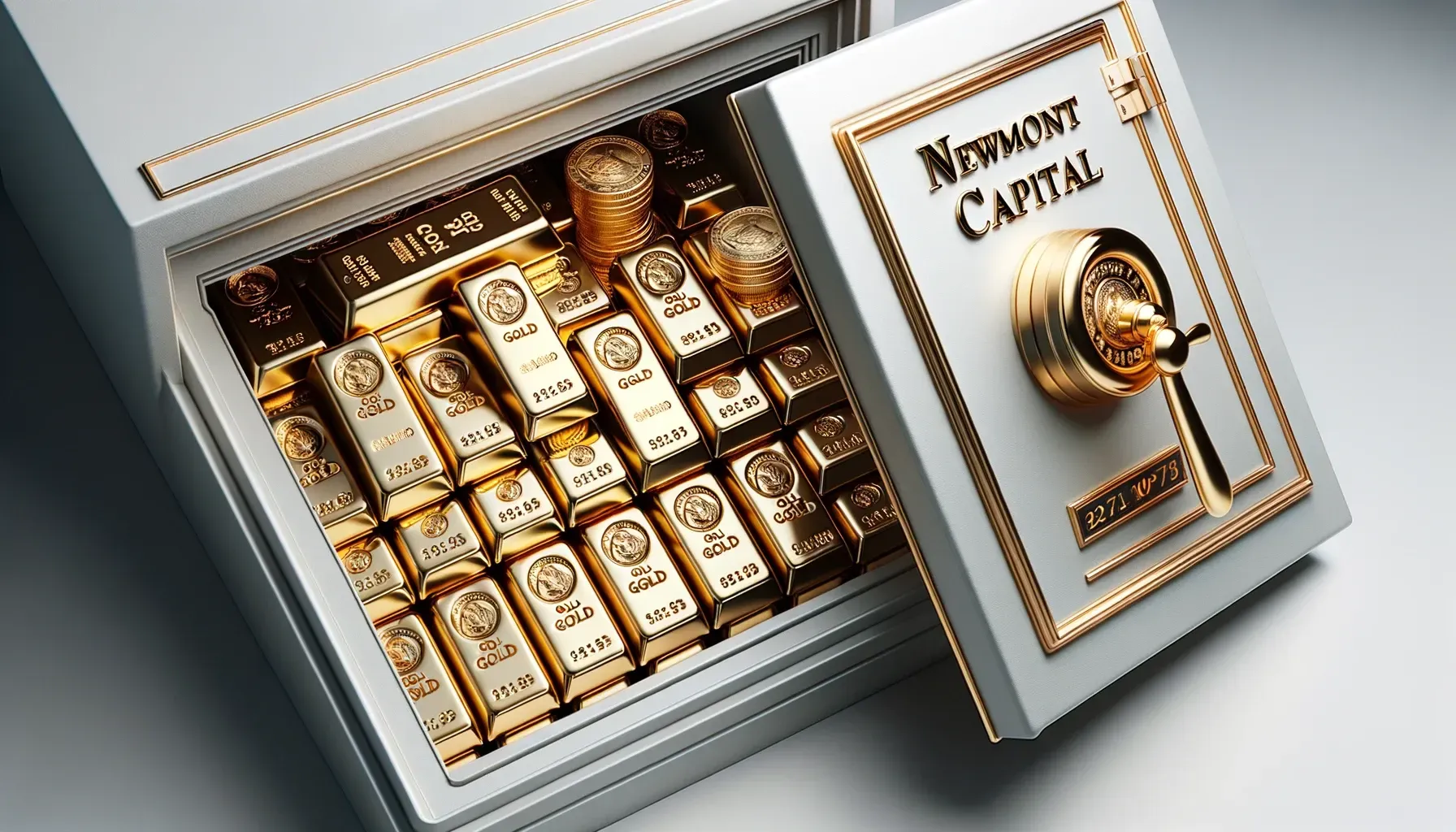Gold Reaches $2,000
Discover the Exciting Prospects Ahead!
Gold has reached an impressive milestone as it soars past the $2,000 mark. This price rally is driven by factors such as the Federal Reserve's commitment to maintaining an easy monetary policy, a weakened U.S. dollar, and the prospect of more fiscal stimulus. Investors are finding comfort in the potential for higher inflation and are turning to gold as a safe haven asset. The Asian stock markets have responded positively to this trend, and there is a growing optimism about the future prospects of the gold market.
The Bull Run of Gold
The price of gold has been on a steady rise, extending its bull run and approaching the $2,000 mark. This surge is attributed to the belief that the Federal Reserve will continue its accommodative monetary policy, leading to a tolerance for higher inflation. The weakened U.S. dollar is also contributing to the upward movement of gold prices. Investors are showing confidence in gold as a long-term investment, driving the demand for gold trading. The market is closely watching for any changes in the Fed's policy statement and the impact it may have on gold prices.
The current bull run of gold has attracted the attention of investors worldwide. As gold prices approach the $2,000 threshold, there is a growing anticipation of further gains. The Federal Reserve's commitment to maintaining a loose monetary policy and the weakened U.S. dollar are key driving factors behind this upward trend. Investors are increasingly considering gold as a safe-haven asset, protecting their portfolios against inflation and market volatility.
"Investors are showing confidence in gold as a long-term investment, driving the demand for gold trading."
Gold trading has seen a significant surge as investors seek to capitalize on the bullish momentum. With the anticipation of higher inflation and a favorable monetary policy, investors are attracted to the potential for long-term growth in gold prices. The market is closely monitoring any changes in the Federal Reserve's policy statement, as it will have a direct impact on gold prices and trading strategies.
The Impact of Global Events on Gold Prices
Global events have a profound influence on the price of gold. Geopolitical tensions, economic uncertainties, and changes in investor sentiment can all impact the direction of gold prices. For example, an escalation in trade tensions between major economies or an unexpected geopolitical crisis can lead to a surge in demand for gold as a safe-haven asset.
- Geopolitical tensions
- Economic uncertainties
- Changes in investor sentiment
As global events continue to unfold, investors will closely monitor their impact on gold prices. The ability to anticipate and react to these events is crucial for successful gold trading strategies.
The Role of Gold as a Safe Haven Asset
Gold has always played a crucial role as a safe haven asset during times of uncertainty. Its intrinsic value and limited supply make it an attractive investment option for those looking to diversify their portfolios and protect their wealth. With the future of the global economy uncertain, gold continues to be a reliable store of value.
During periods of market volatility, gold tends to retain its value or even appreciate, while other asset classes may experience significant declines. This characteristic makes it an essential component of a well-balanced investment strategy. Whether it's geopolitical tensions, economic crises, or inflationary pressures, gold has historically proven its resilience as a safe haven asset.
The Benefits of Investing in Gold
- Preservation of wealth: Gold has stood the test of time as a store of value, protecting investors' wealth against inflation and currency fluctuations.
- Diversification: Including gold in an investment portfolio can help reduce overall risk by providing a hedge against stock market volatility.
- Liquid asset: Gold is highly liquid, meaning it can be easily converted into cash or other investments when needed.
- Potential for growth: As global economic uncertainties persist, the demand for gold remains strong, and its price is expected to rise in the long term.
"Investing in gold can provide stability and potential growth in the face of market volatility and economic uncertainties."
There are several ways to invest in gold, such as purchasing physical gold bullion or investing in gold stocks. Physical gold bullion offers the advantage of holding a tangible asset that can be stored securely, while gold stocks provide exposure to the performance of gold mining companies. It's essential to carefully consider your investment goals, risk tolerance, and time horizon before making any investment decisions.
As the future of the global economy remains uncertain, gold's role as a safe haven asset is expected to continue. Its historical track record, combined with its scarcity and intrinsic value, makes it an attractive option for investors seeking stability and potential growth in their portfolios.
Factors Affecting the Price of Gold
When it comes to understanding the price of gold, there are several key factors at play. These factors have a significant influence on the value of gold and its performance in the market.
Inflation and Interest Rates
Gold has long been considered a hedge against inflation. During times of high inflation, the value of currencies tends to decline, making gold a more attractive investment option. As a result, the demand for gold increases, driving its price up. Similarly, interest rates also impact the price of gold. When interest rates are low, saving becomes less lucrative, prompting investors to seek alternative investments such as gold.
Weakening Dollar
The strength of the U.S. dollar has a significant influence on the price of gold. When the dollar weakens, the price of gold tends to rise. This is because a weaker dollar makes gold more affordable and appealing to international buyers. As a result, increased demand for gold drives its price higher.
Future Gold Demand
The future demand for gold, both for jewelry and industrial purposes, also plays a role in determining its price. As economies grow and consumer preferences change, the demand for gold may fluctuate. Keeping an eye on future gold demand can help investors anticipate shifts in the market and make informed investment decisions.
Understanding the factors affecting the price of gold is crucial for investors looking to navigate the gold market. By considering inflation, interest rates, the strength of the dollar, and future gold demand, investors can gain valuable insights into the potential movement of gold prices and make informed investment choices.
Gold Price Trends and Predictions
Analysts are closely watching the gold market as it continues to show promising trends. Forecasts indicate that the price of gold will continue to rise in the coming years, with the possibility of reaching new record highs. Some predictions suggest that gold could surpass the $2,000 mark in late 2012 or early 2013, which would be a significant milestone for the precious metal.
It is important to consider that the gold market is approaching the end of its decade-long bull run. As the macroeconomic landscape evolves and investor sentiment shifts, there may be a secular retreat in the price of gold. It's crucial to keep an eye on factors such as the strength of the U.S. dollar and increased risk aversion, as they can influence short-term price movements.
Despite the potential short-term fluctuations, gold remains an attractive investment option for many. Its historical role as a safe haven asset and store of value makes it a favored choice for investors seeking stability and protection against inflation. Additionally, the limited supply of gold further enhances its appeal as a long-term investment.
Demand and Consumption of Gold
Gold is a highly sought-after precious metal, with demand stemming from various sources such as jewelry, electronics manufacturing, and central bank purchases. While jewelry demand has historically been a significant driver of gold consumption, there has been a recent softening in overall demand, particularly in the first half of this year. However, it's important to note that China is predicted to overtake India as the world's largest gold consumer.
In terms of future gold demand, several factors will play a role. Economic growth, geopolitical tensions, and changes in consumer preferences will all influence the demand for gold. As economies continue to recover and expand, there may be an uptick in gold consumption as consumers regain confidence and purchasing power. Additionally, geopolitical tensions and uncertainties can drive investors towards safe haven assets like gold, leading to increased demand.
Understanding the factors affecting gold consumption is crucial for investors and industry participants. By monitoring economic trends, geopolitical developments, and shifts in consumer behavior, stakeholders can make informed decisions regarding gold investments and production strategies. As the global economy evolves, so too will the demand for gold, making it essential to stay abreast of the latest market dynamics.
Gold as a Store of Value
Gold has long been recognized as a reliable store of value, maintaining its allure over centuries. Unlike paper currencies that can be subject to inflation and devaluation, gold's enduring worth allows it to preserve wealth effectively. As a tangible asset, gold provides a safe haven for investors during times of economic uncertainty or market volatility.
Investors turn to gold as a store of value because of its limited supply and its ability to withstand inflation and currency fluctuations. Amidst global economic challenges and uncertainties, gold offers stability and security. Its consistent performance and historical track record make it an attractive option for those seeking to protect their assets.
"Gold is the only currency that does not require a counterparty to function," says renowned investor Ray Dalio. This quote highlights the unique nature of gold as an asset that stands on its own, independent of any financial institution or government. This characteristic adds to its appeal as a store of value.
As the global economy continues to face unpredictable shifts, the demand for gold as a store of value is expected to remain strong. Investors value gold for its stability and reliability, making it a key component of well-diversified portfolios.
The Outlook for Gold in 2023-2024 and Beyond
As we look to the future, there is cautious optimism for the gold market. Analysts are predicting that gold prices will continue their upward trajectory, with the potential for reaching new highs in the coming years. Factors such as concerns over inflation, central bank buying, and the global economic landscape will play a crucial role in shaping the future of gold.
However, it is important to note that the gold market may experience volatility in the short term. The price of gold will be influenced by various economic and geopolitical factors that can lead to fluctuations. It is essential for investors to closely monitor market trends and seek professional advice before making any gold investments.
While the gold price forecast remains positive, it is crucial to exercise caution and consider the bigger picture. The gold market has been on a bull run for over a decade, and at some point, it is expected to enter a period of correction or consolidation. Investors need to be prepared for potential shifts in market sentiment and adjust their strategies accordingly.
Ultimately, the future of gold is influenced by a complex interplay of economic and geopolitical factors. As a result, gold price predictions should be approached with a level-headed perspective, taking into account both short-term fluctuations and long-term trends. The key is to stay informed, be adaptable, and make informed investment decisions based on thorough research and expert guidance.
Related Articles

Contact Info
Corporate Headquarters:
12100 Wilshire Blvd, Suite 800
Los Angeles, CA 90025
Wyoming Office:
2232 Dell Range Blvd, Suite 284
Cheyenne, WY 82009
Texas Office:
675 Town Square Blvd, Suite 200, Bldg 1A
Garland, TX 75040
corporate@newmontcapitalgroup.com
©2024 Newmont Capital Group, LLC. All rights reserved. Opinions on this website are not indicative of future performance. Precious metals carry risks and may vary in value. Newmont Capital Group does not guarantee profit from metal investments. Purchasing or selling decisions, based on personal research and judgment, are solely the customer's responsibility. Newmont Capital Group does not offer investment, legal, retirement, or tax advice; individuals should consult respective professionals.
Terms and Conditions · Privacy Policy · AML/Compliance and Supervisory Procedures · ADA Compliance · Risk Disclosures · Shipping and Transaction Agreement





